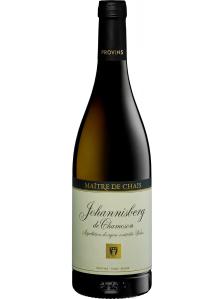-
中文名:
-
英文名:Silvaner
-
种植区域:
-
香气:
-
颜色:
Silvaner is an underrated, neutral-scented, white-wine grape used widely in western Germany, and just across the Rhine in Alsace (where it is spelled Sylvaner). Tiny quantities can also be found in Alto Adige, northern Italy, where it is a specialty of the Isarco Valley.
One of the world's less-revered wine grapes (its reputation falls far behind that of other Germanic varieties such as Riesling and Grüner Veltliner) Silvaner is something of a quiet achiever. It has its devotees in various regions, although they are never particularly vocal in their support of the much-maligned variety.
In 2013, Silvaner vines covered a little more than 12,600 acres (5100 ha) in Germany, ranking it third among the country's white-wine varieties, behind Riesling and Müller-Thurgau. Third place isn't bad, but Riesling outnumbers Sylvaner five-to-one, and remains unchallenged as Germany's icon wine grape. All too often this leads to slightly unfair comparisons between the two varieties.
While Silvaner lacks Riesling's aromatic intensity and bracing acidity once vinified, the variety offers several advantages while still in the vineyard. Silvaner vines ripen earlier than Riesling, reducing the risk of the grapes being damaged by early winter frosts. They are also less fussy about vineyard site selection, and will prosper in many environments where Riesling would fail to perform. All of this explains why Silvaner is more popular among winegrowers than wine consumers, and how it became Germany's most widely planted wine grape in the early 20th Century.
Some of the world's finest Silvaner wines come from Germany's otherwise undistinguished Franken region. It is significant that Franken is the only Germany wine region where Riesling does not figure among the varieties of note. The clay-limestone soils here give its Silvaner wines substantial structure and body, while the cool climate helps prevent acidity levels from dropping too low.
The famous Würzburger Stein vineyard in Würzburg is a great example of a location where Silvaner outperforms Riesling. The classic Würzburger Stein Silvaner is a well-rounded wine with impressive minerality, faint herbal notes and a hint of citrus and melon. Silvaner is one of few varieties able to ripen fully in Franken, and is capable of achieving sufficient must-weights to be sold as Prädikatswein (see German Wine Label Information).
In Alsace, Sylvaner wines have a distinctively full-bodied style with a whiff of earth and smoke on the nose, highlighted at the expense of the scant fruit flavors the variety manages to muster. Some of the finest examples come from Alsace's Grand Cru sites, although most cannot be labeled "Grand Cru" because the variety is almost entirely excluded by Alsace's Grand Cru appellation laws. Only one Alsace Grand Cru vineyard – Zotzenberg – is officially permitted to use Sylvaner in its wines. Other notable Alsace wines using Sylvaner include Muré's Cuvée Oscar Sylvaner from the Clos Saint-Landelin vineyard, Domaine Ostertag's Sylvaner Vieilles Vignes and the intriguingly titled 'Now & Zen Wasabi White' (a Sylvaner-dominant blend).
Italian and Swiss Silvaners are typically much lighter and crisper than their counterparts from Alsace and Franken, with faint citrus notes and a hint of pale honey. These wines are invariably at their best within the first couple of years after vintage.
Silvaner is a crossing of Traminer with a little-known variety called Osterreichisch Weiss. The crossing is thought to have occurred somewhere in eastern Austria, although today very little Silvaner is found anywhere in Austria. The variety made its way to Germany in the 17th Century, and from there to Alsace, where it became particularly popular after World War II. The variety has a couple of color mutations known as Roter Silvaner and Blauer Silvaner, although both are largely indistinguishable from Silvaner itself.
Synonyms include: Sylvaner, Grüner Silvaner, Sylvaner Verde, Johannisberg, Gros Rhin, Sylvánské Zelené, Zeleni Silvanec.
Food matches for Silvaner include:
- Alsatian onion tart
- Grilled asparagus with poached egg
- Seafood chowder


